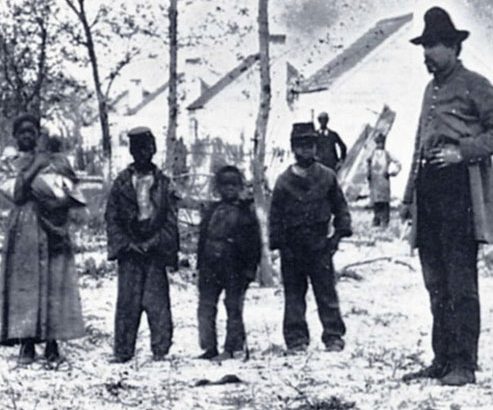- In the aftermath of the Battle of Port Royal on Hilton Head Island, wealthy white residents and plantation owners fled inland and took as many slaves as they could with them, leaving behind over 10,000 slaves. Samuel DuPont, Captain in the US Navy, reported “you can form no idea of the terror […] Beaufort is deserted and the [white residents and plantation owners] flew in panic, leaving public and private property, letters, portfolios, all their regimental archives, clothes, arms, etc.”
- The newly liberated, formerly enslaved residents, experienced a mix of emotions, from excited, to wary, and ultimately curious. A correspondent for Harper’s Weekly reported that the residents’ “delight [was] unbounded at the prospect of future freedom.” However, immediately after the Battle, many formerly enslaved families remained holed-up in their cabins, praying and anxiously awaiting the departure of the last remaining Confederate soldiers.
- Once the coast was clear, the formerly enslaved residents, officially known as “contrabands”, arrived in Hilton Head from the mainland and surrounding islands to seek refuge with the Union Army and showed up by the hundreds at the newly minted Union Army Headquarters on Hilton Head Island. Once registered at the headquarters, they were assigned to barracks and began their new lives on base. The new residents who were able quickly began working for pay on base, unloading supply ships, serving as waiters and housekeepers for Union officers, washing clothes, working in the commissary, bake shop, garden, and hospital, while children played nearby. Moreover, since cotton was still the leading export of the United States, it continued to be harvested by the formerly enslaved, but now for a wage.
Aftermath of Battle of Port Royal: The Formerly Enslaved Seek Refuge


